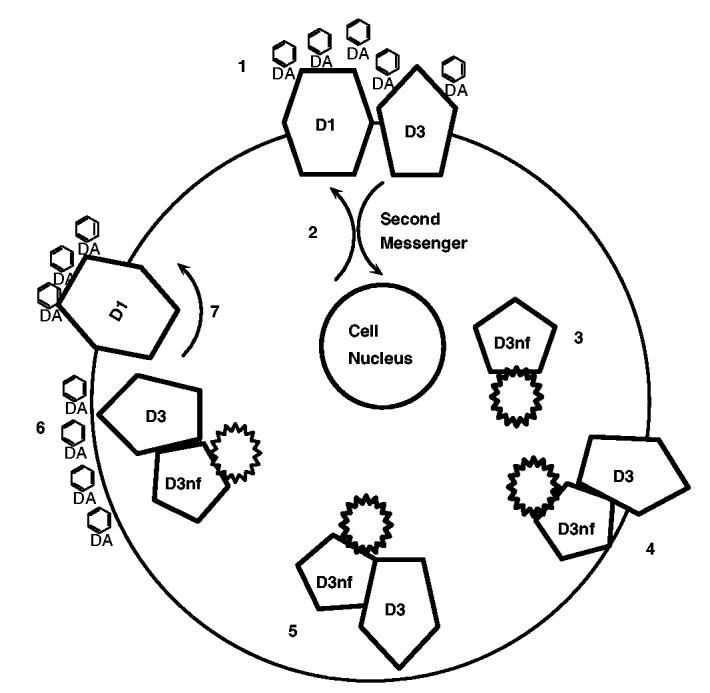Figure 2.

D3/D3nf mechanism of behavioral sensitization to AMPH. (1) AMPH increases extracellular dopamine. (2) D1 and D3 receptor stimulation activate opposing intracellular signaling systems. D3 receptor has highest dopamine affinity. D3 stimulation results in homeostatic mechanisms opposing receptor stimulation, including (3) increased D3nf expression. (4) D3nf and D3 dimerize, directing the D3/D3nf dimer (5) toward intracytoplasmic trafficking pools and removing D3 receptor from the synaptic membrane. (6) At the next AMPH exposure, D3 receptor is not available to bind dopamine. (7) The result is release of D3 receptor-mediated opposition to D1 receptor stimulation of adenylate cyclase activity. For additional details see in the text.
